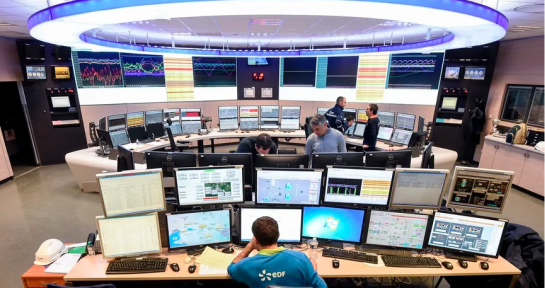Appetite for clean energy is at an all-time high, with corporations and utilities both racing to meet gigawatt-scale demand to drive grid decarbonization, help companies reduce their carbon footprint, and make progress towards ambitious net zero goals. That appetite – alongside increasing disclosure requirements – is ramping up demand for more granular and auditable data on clean energy sourcing, especially from corporate and industrial customers. For many utilities, however, clean energy sourcing and delivery happens across a range of functions and data silos and this presents several business challenges.
For utilities putting decarbonization into overdrive, it is critical to focus on what is most important – getting projects into deployment and operation. Utilities’ IT teams can build data infrastructure to capture the range of associated data (generation, RECs, customer data, etc.) – but there are several important benefits to working with 3rd party software companies: reduction in integration times, enabling utilities to meet a range of goals across the organization rather than those of single teams, and faster time to value for customers. Many utilities have begun building out these functions only to realize that they require upkeep and maintenance far beyond what their resourcing allows.
Reporting on clean energy requires a confluence of data sets
When customers receive their monthly bill or settlement statement, they are only seeing the top-line data, not the full range of generation, usage, and customer tracking that utilities must gather and assemble to do their work. More importantly, the complexity of data utilities must manage continues to change and grow–including REC registries, generation, related emissions, risk/compliance, and customer data–as do the standards for managing that information.
That integration of data and continued refinement to keep up with standards takes time and determined work. More importantly, it can take mandates from across the organization to prioritize the funding and manpower needed to bring on new hires or divert your existing IT teams to deliver. Software procurement taking place at the enterprise level can enable them to meet a range of goals, not one of any single silo.
Working with a partner that is agile–both in its ability to work with a range of teams in your organization and in how it can add fresh functionality–can speed up access to data, mitigate complexity and adoption pain, and most importantly drive how quickly that data can serve your customers. The time and discovery process required to customize IT solutions for your organization’s commercial team could be saved by sourcing tools tailormade for the customer engagement process. In addition, working with cloud-hosted tools rather than in-house solutions allows for quicker customization and development as needs evolve.
Helping customers see costs and returns “beyond the bill”
ESG and sustainability teams typically start by managing data with spreadsheets, but as their initiatives grow more sophisticated, so does their need to better warehouse and maintain digital records. Spreadsheets leave organizations prone to costly human errors. New reporting requirements in the EU and elsewhere will require more companies to submit sustainability and ESG data for auditing through assurance processes–meaning they will have a vested interest in having the digital “receipts” for their carbon footprint.
Providing richer data and source-level transparency and traceability for clean energy sourcing and emissions tracking can offer a stickier experience for utilities’ commercial and industrial customers. Increasingly these same customers are examining access to clean, reliable energy options in their siting process, so this “amenity” could help win new customers or keep existing ones sticky. Further, having a more robust warehousing of data better supports the development of new clean energy and decarbonization programs, and sets your teams up to better tailor decarbonization products for your customers.
Lastly, more streamlined access to data also goes beyond offerings – it reduces compliance risks, both for your own organization, as well as for your customers through auditable data you would be able to provide to them.
Cleartace’s platform has already been working to answer these challenges, which can enable your teams to focus on what’s critical. Please visit our website to learn more.

